Introduction
At the start of this series of step by step guides you installed System Center Configuration Manager (Current Branch), then you configured discovery methods. Next you configured boundaries to get an understanding of how automatic site assignment and content location works. After that you learned how to update ConfigMgr with new features and fixes using a new ability called Updates and Servicing and you learned how to configure ConfigMgr to use Updates and Servicing in one of these two modes:
To prepare your environment for Windows 10 servicing (this guide) you learned how to setup Software Updates using an automated method (via a PowerShell script) or manually using the ConfigMgr console. Next you used a PowerShell script to prepare some device collections, then you configured client settings for your enterprise and finally you’ll deployed the ConfigMgr client agent using the software updates method which is the least intensive method of deploying the Configuration Manager client agent.
As System Center Configuration Manager (current branch) is being delivered as a service now, version 1602 was made available (March 11th, 2016) and you used Updates and Servicing to do an in-place upgrade to that version as explained here. Next you learned about how to use the Upgrade task sequence to upgrade your Windows 7, Windows 8 (and 8.1) and even your Windows 10 devices to a later build of Windows 10.
You then learned about the new Windows 10 servicing features which use Servicing Plans in ConfigMgr (Current Branch). Next you integrated MDT 2013 update 2. MDT integration with ConfigMgr is useful as it provides additional functionality for operating system deployment scenarios such as Offline Language Package installation or User Driven Integration (UDI).
Next you learned how to deploy Language Packs offline for Windows 10. To assist with Windows 10 servicing and for applying appropriate software updates to your Windows 10 devices, you used PowerShell to add queries to the various Windows 10 collections.
Next you took a deeper look at the Windows 10 Upgrade task sequence, and learned one way of dealing with potential upgrade issues. While that method will flag a problem, such as determining the system UI language doesn’t match the provided media, it won’t allow you to continue with the upgrade. Next you learned how to upgrade the operating system when a language pack was installed, provided that the system UI language is from a ‘list’ of approved languages that you intend to support.
This guide will show you how to display customized messages to a user during a task sequence, and how to set an exit code which could allow you to deliberately fail an action if necessary. All that’s required is a few steps to set variables, a PowerShell script, and the serviceUI.exe executable from MDT 2013 Update 2.
Step 1. Create a package
On your ConfigMgr server, in the sources share, create a folder called Display Custom Message and place the DisplayCustomMessage.ps1 PowerShell script available in the downloads section of this guide, in the folder. Even though you might be deploying an X64 operating system, locate, select and copy the x86 architecture version of ServiceUI.exe from the Sources\OSD\MDT\MDT2013u2\Toolkit\Tools\x86 folder
into the Display Custom Message folder as shown below.
In the ConfigMgr console, Software Library, select Packages and right click, choose Create Package. Fill in the following details,
Choose Do not create a program and then continue through the wizard until completion.
Once the package is created, right click the package and choose Distribute Content.
Distribute the package to your distribution points.
Step 2. Create a custom task sequence
In the ConfigMgr console, in Software Library, select Operating Systems and right click on Task Sequences, choose Create Task Sequence.
select Create a new custom task sequence
give the task sequence a suitable name such as Display Custom Messages with exit codes
continue through that wizard until completion.
Step 3. Edit the task sequence
Right click on the newly created task sequence and choose edit
It will appear blank, click on the Add Drop down and add a New Group called Display Custom Message
Create a new Set Task Sequence Variable step called Set Title with a Task Sequence Variable called Title, with a suitable value as follows:
Create a new Set Task Sequence Variable step called Set Message with a Task Sequence Variable called Message, with a suitable value as follows:
Create a new Set Task Sequence Variable step called Set ReturnCode with a Task Sequence Variable called ReturnCode, with a suitable positive value as follows:
Click Add and choose Run Command Line, name the step Display Custom Message and paste in the following:
ServiceUI.exe -process:TSProgressUI.exe %windir%\sysnative\WindowsPowerShell\v1.0\powershell.exe -WindowStyle Hidden -NoProfile -ExecutionPolicy bypass -nologo -file DisplayCustomMessage.ps1
For Package, select the Display Custom Message package created above.
Copy the entire group and paste it below the first group
Edit the Set Message step as below
Edit the Set ReturnCode step, and choose a value that the Options tab on the Display Custom Message step is not going to expect such as 1, this will cause the next step to fail when it returns the return code.
Apply your changes and exit the Task Sequence wizard.
Step 4. Deploy the task sequence
Right Click on the task sequence and choose Deploy
Choose a suitable collection and use a purpose of Available.
Step 5. Review the capabilities
On a client computer that is in the collection that the task sequence was deployed to, open Software Center and select the Display Custom Message with exit codes task sequence.
choose Install
and after a few moments the first popup message appears !
As the ReturnCode for the first message was set to a value we expected (0 or 3010) it did not fail the task sequence. Click OK to continue…
the next message appears, note the different text, and it’s hinting towards what will happen
Clicking OK will produce the failure
Which is OK because we were expecting it, in fact, the ReturnCode we set (1) is listed in the failure message. In a real Production task sequence however, you’d take care of failures and deal with them in a professional way, I just want you to see that we can actually set the ReturnCode via the custom message.
To get more proof of that refer to the SMSTS.log file, and you can see that it’s setting the ReturnCode to the value we chose
result !
Summary
Popping up messages to users during a task sequence is sometimes necessary, and when things go wrong, you sometimes need to fail the task sequence or set a ReturnCode to do a planned action. This guide helps you do both of those things dynamically.
Related Reading
- Task sequence steps in System Center Configuration Manager – https://technet.micr…y/mt629396.aspx
Downloads
You can download a Microsoft Word copy of this guide here dated 2016/05/26
 How can I display custom messages to users during a task sequence in SCCM Current Branch.zip 1.91MB 7 downloads
How can I display custom messages to users during a task sequence in SCCM Current Branch.zip 1.91MB 7 downloads
You can download the PowerShell script used above here.
 DisplayCustomMessage.zip 592bytes 8 downloads
DisplayCustomMessage.zip 592bytes 8 downloads


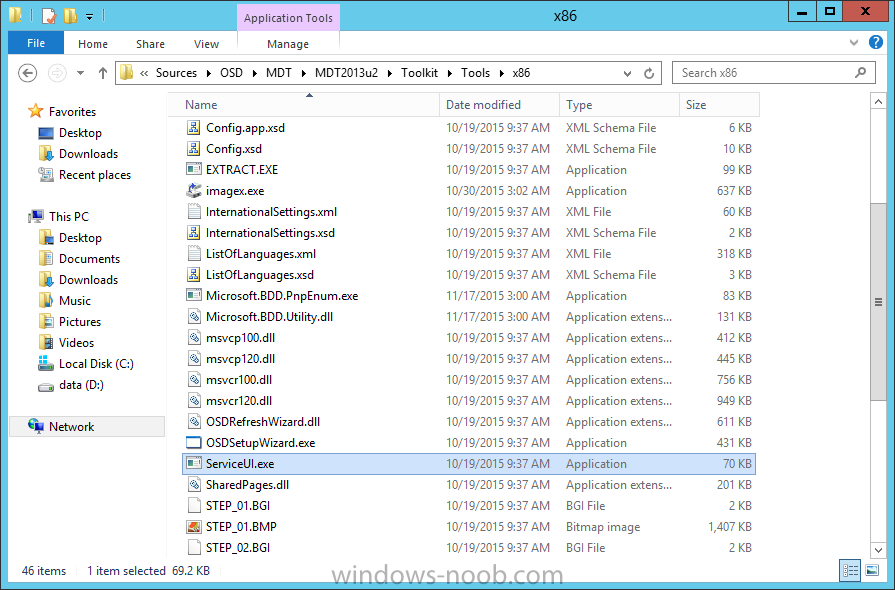
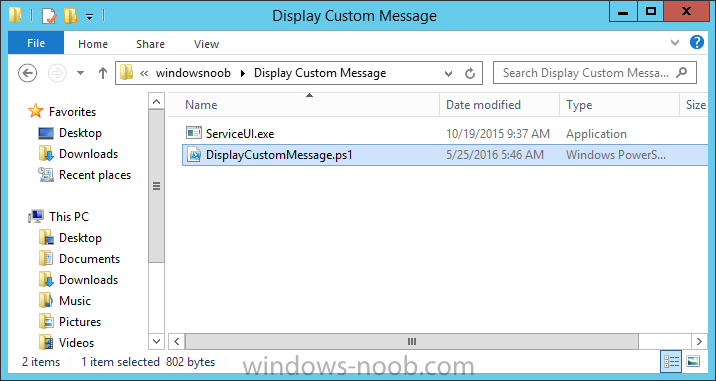
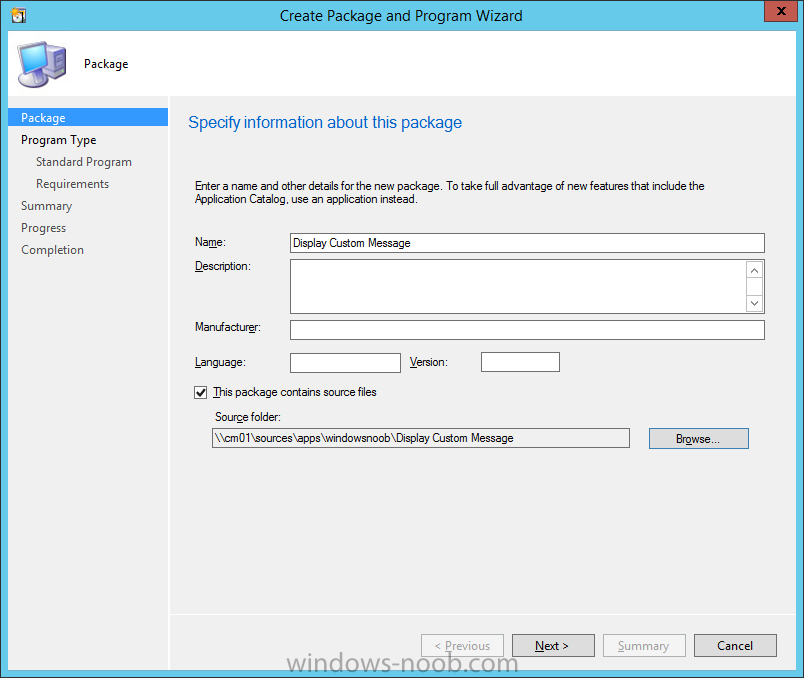
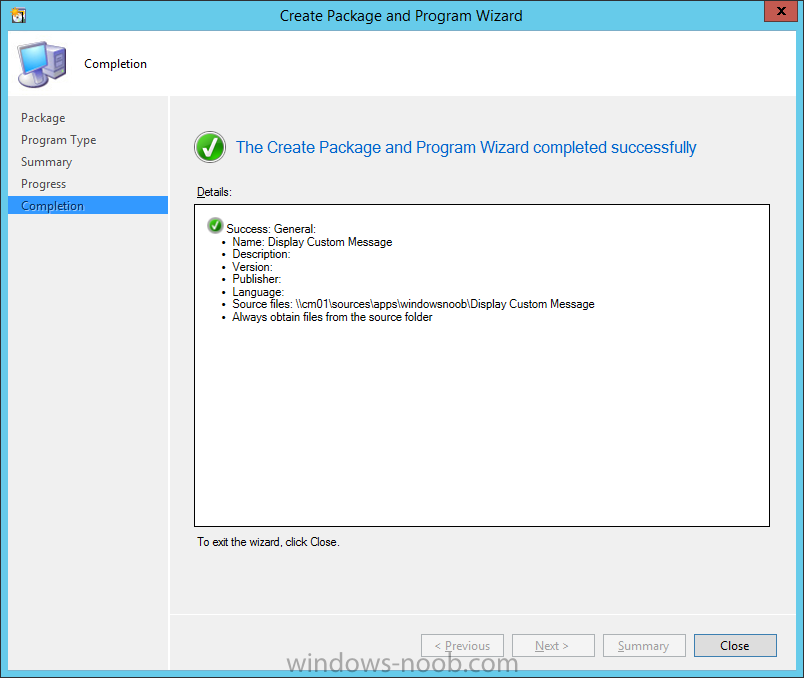
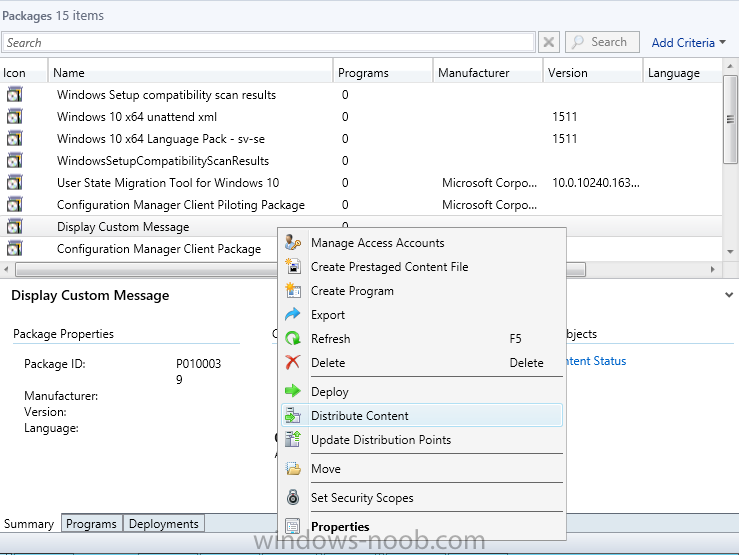
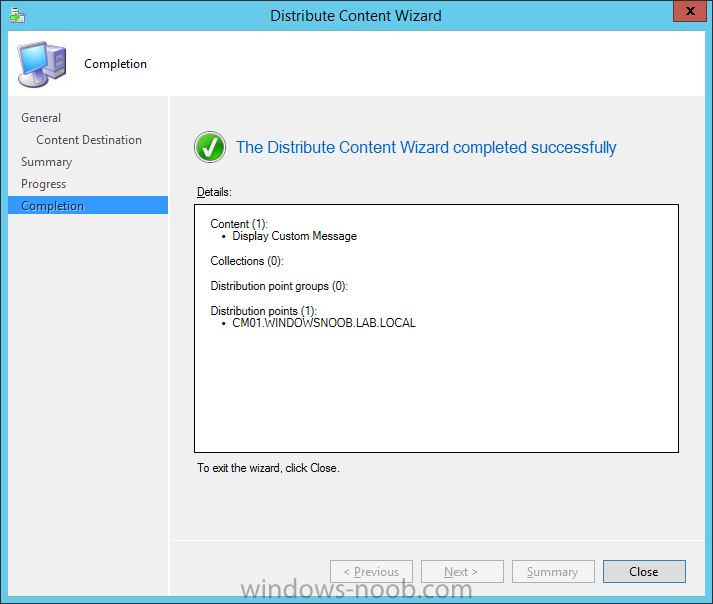
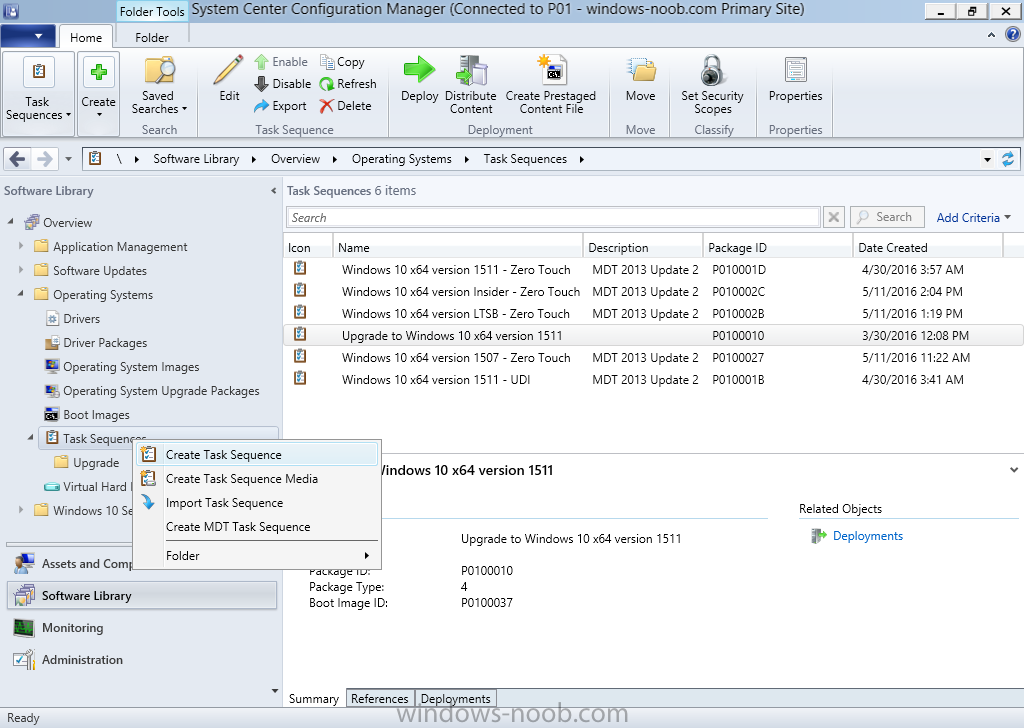
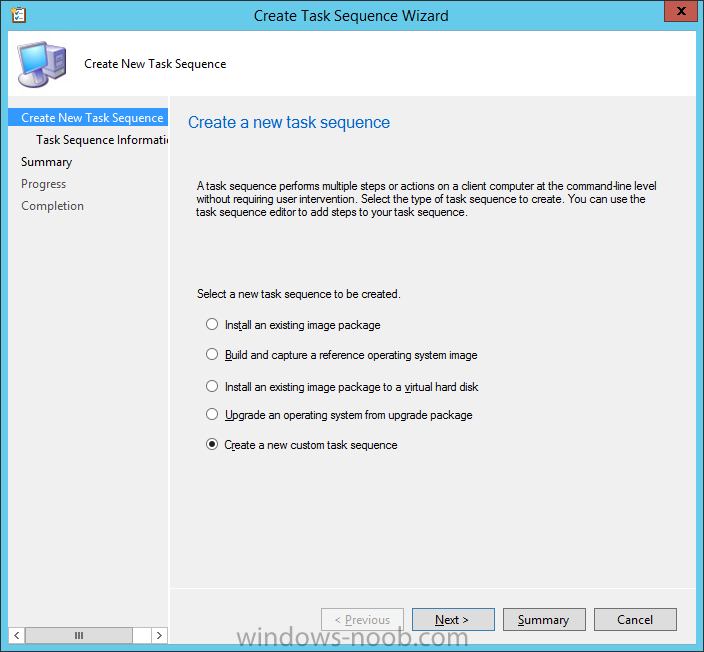
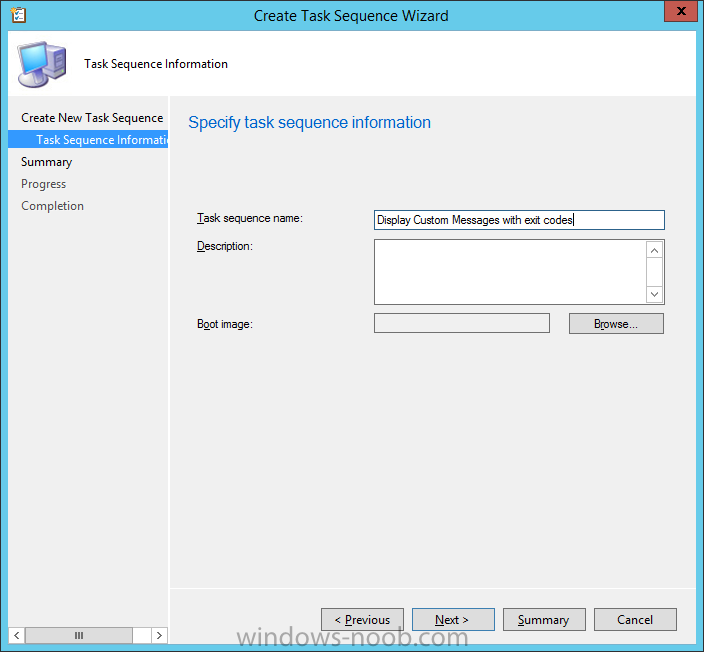
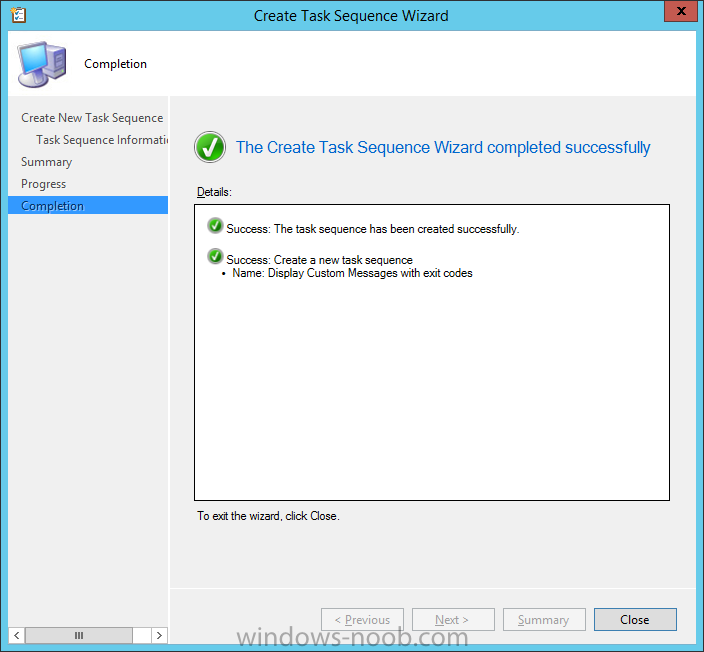
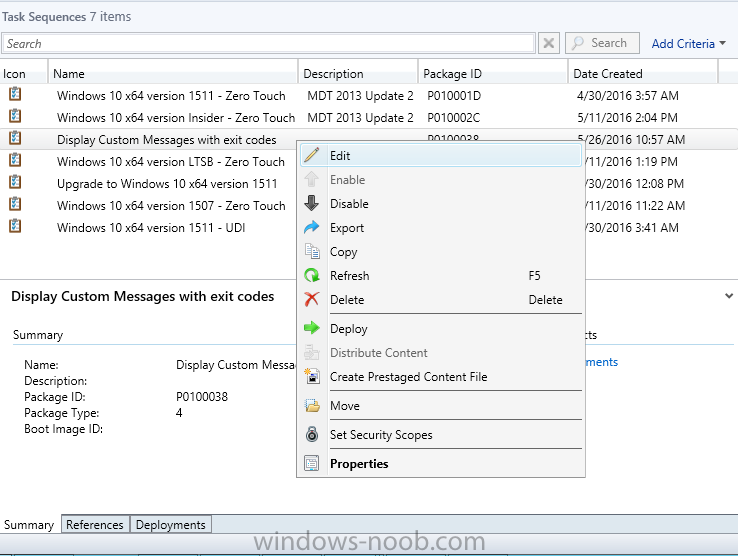
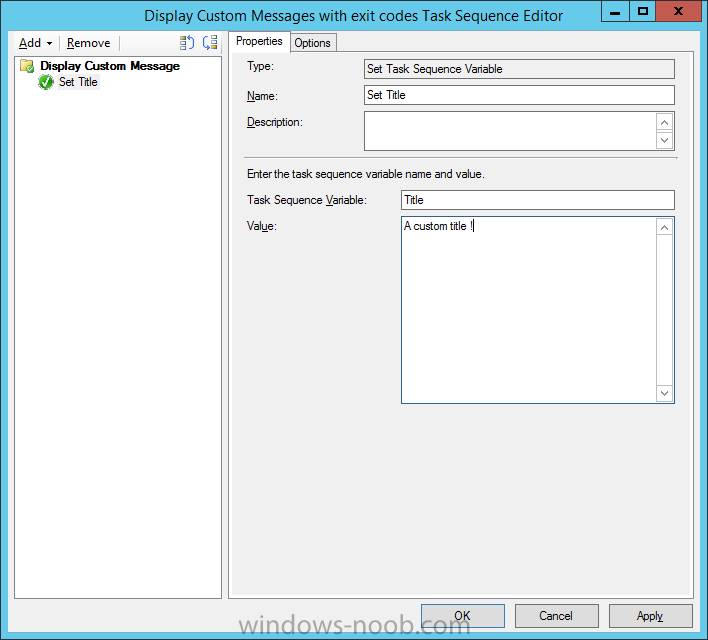
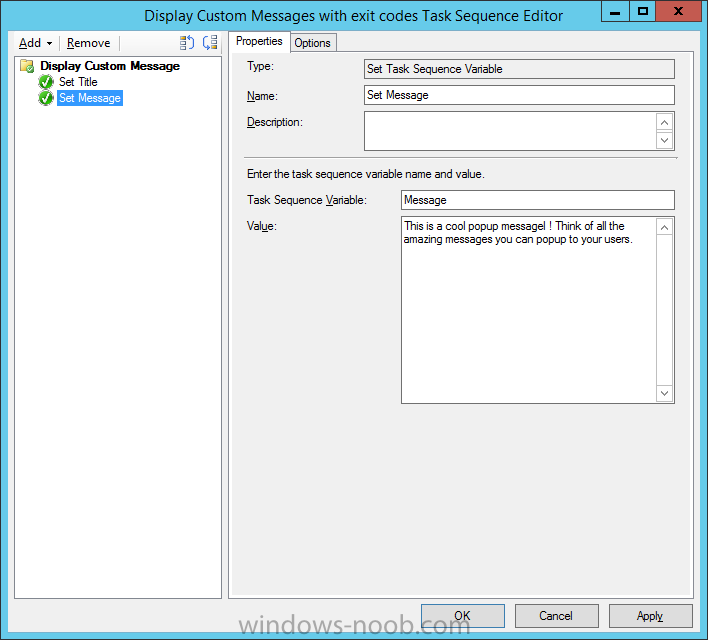
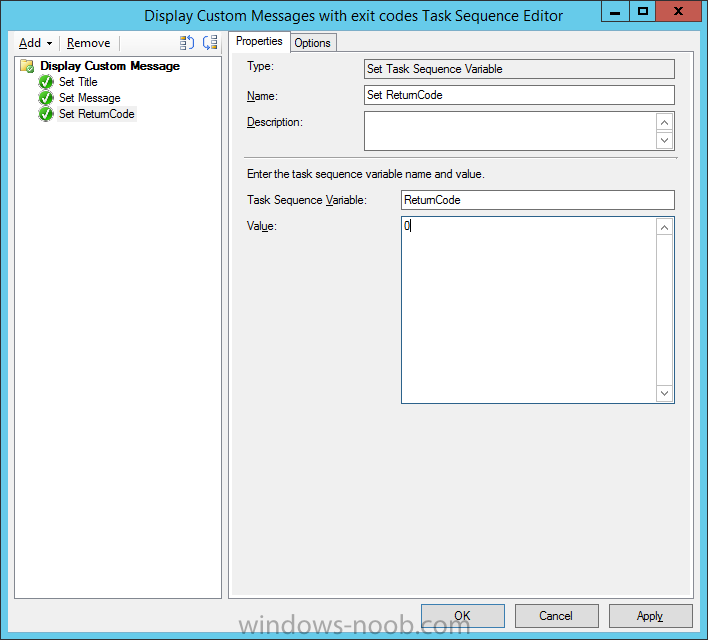
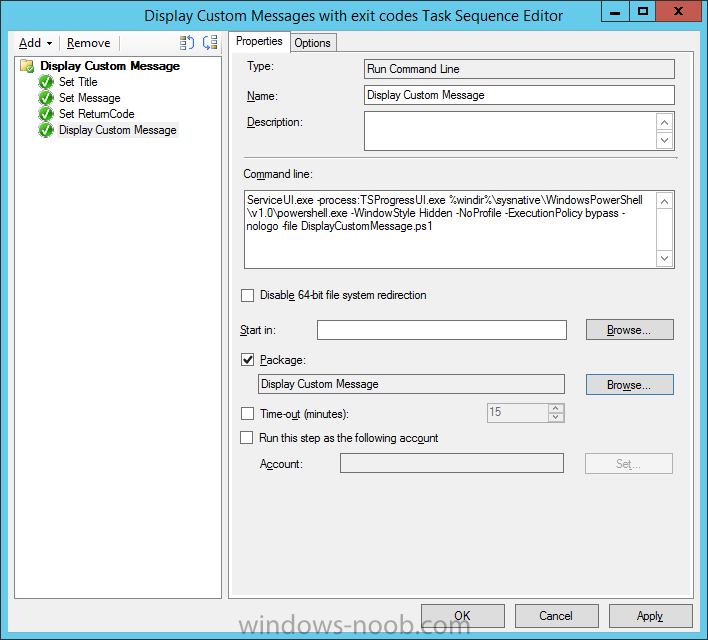
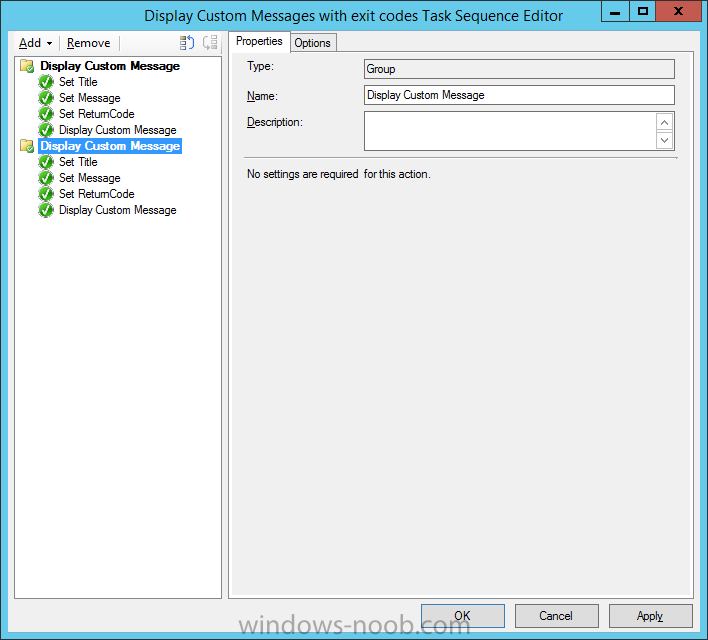
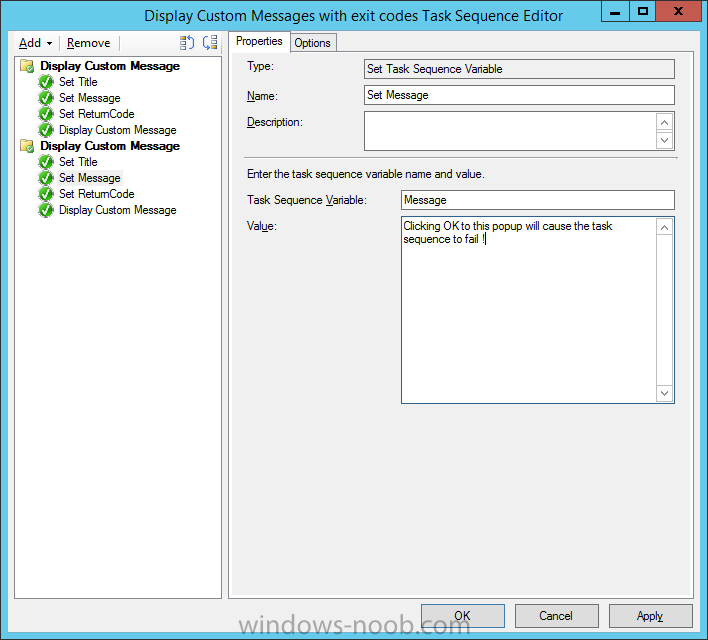
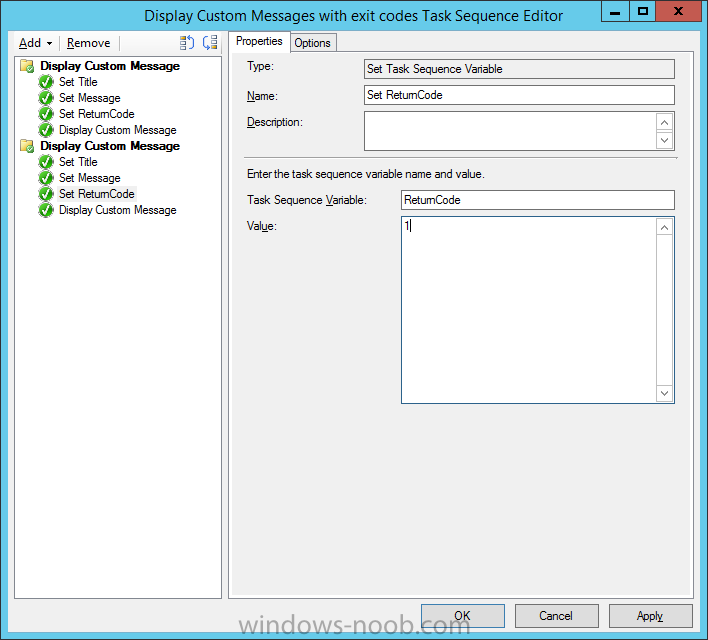
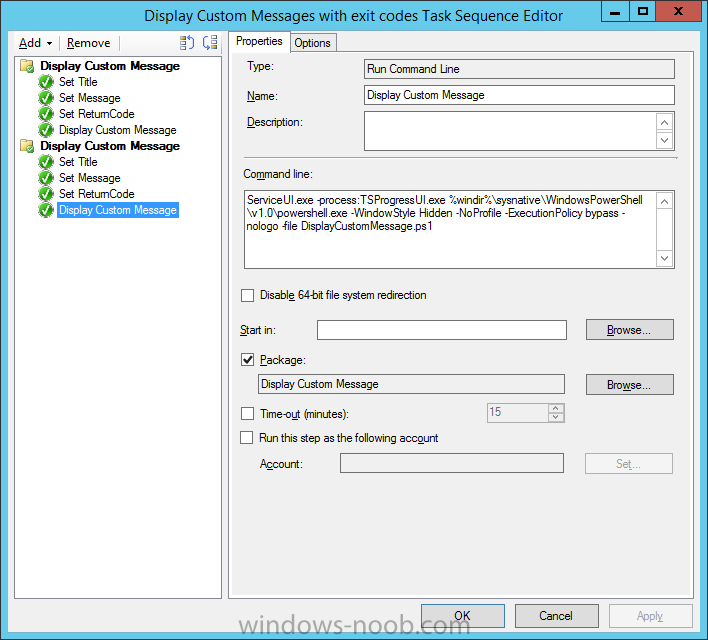
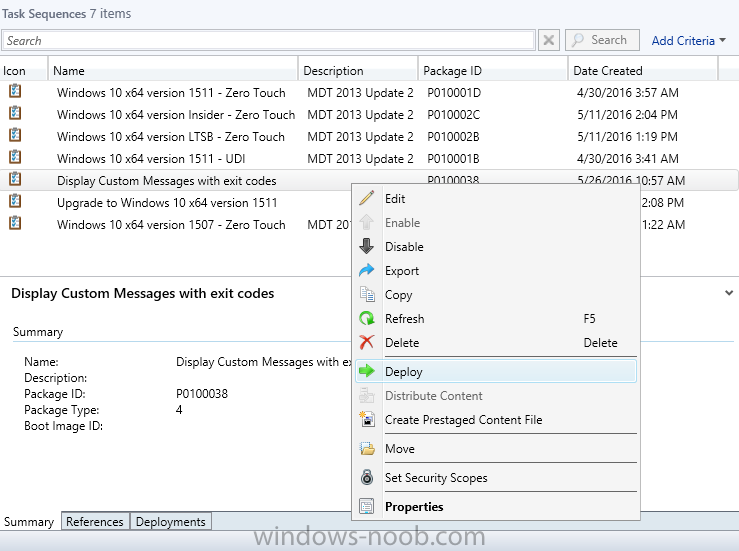
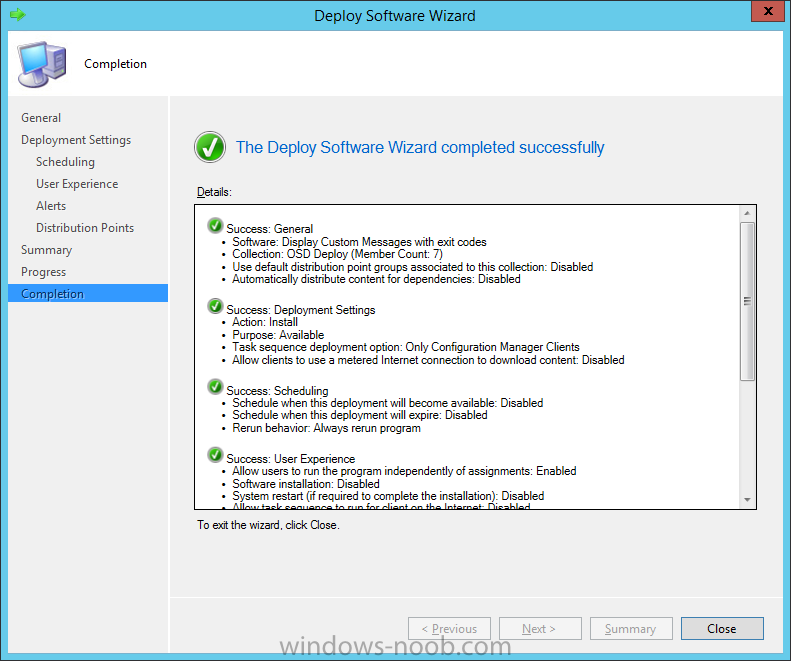
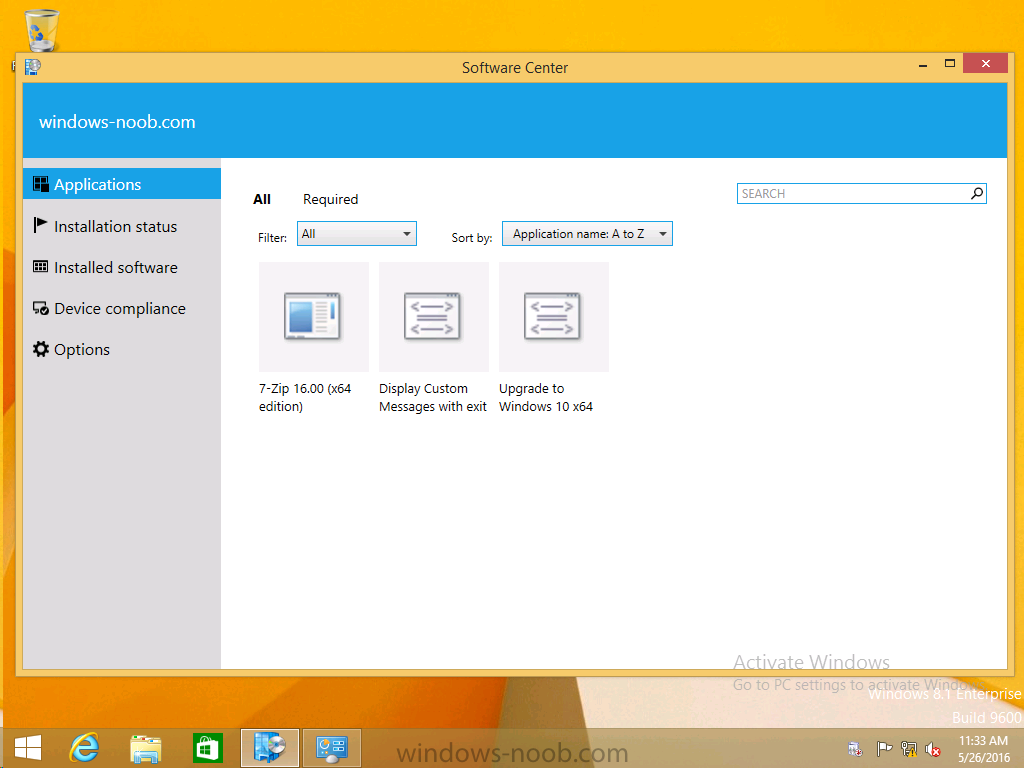
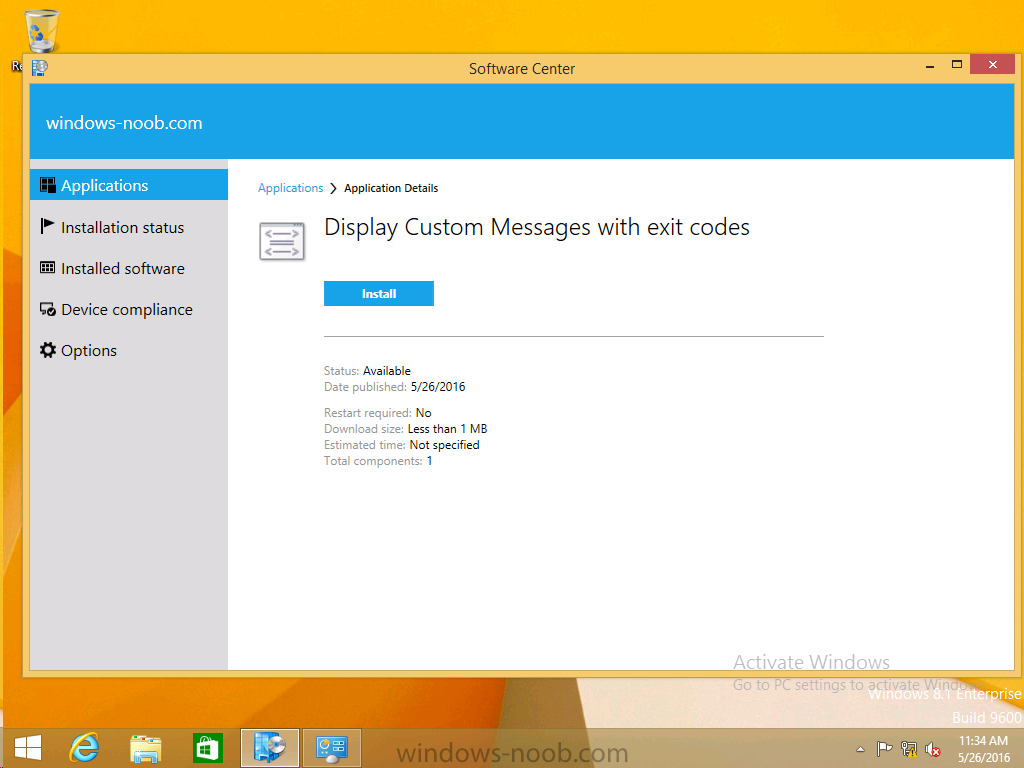
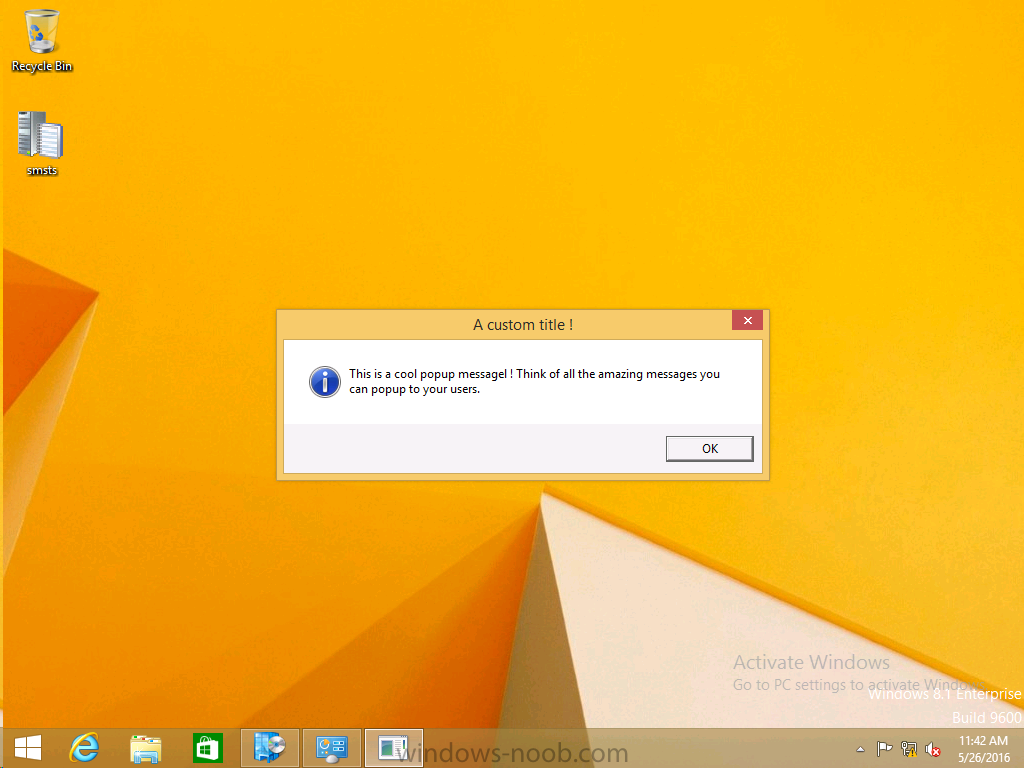
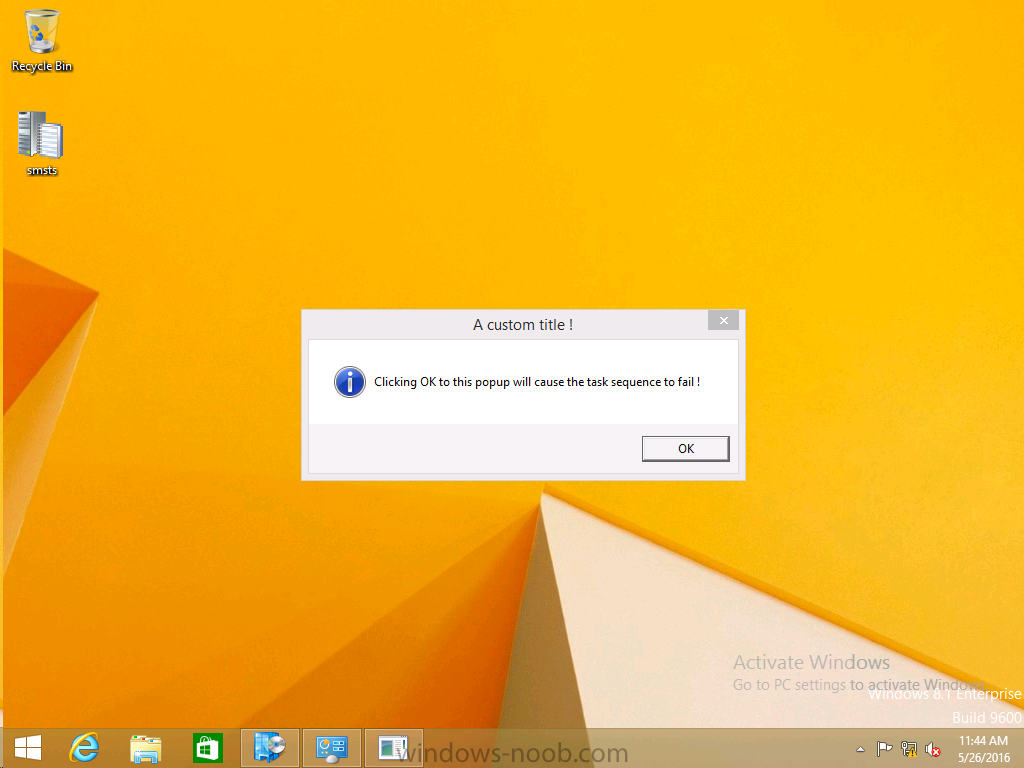
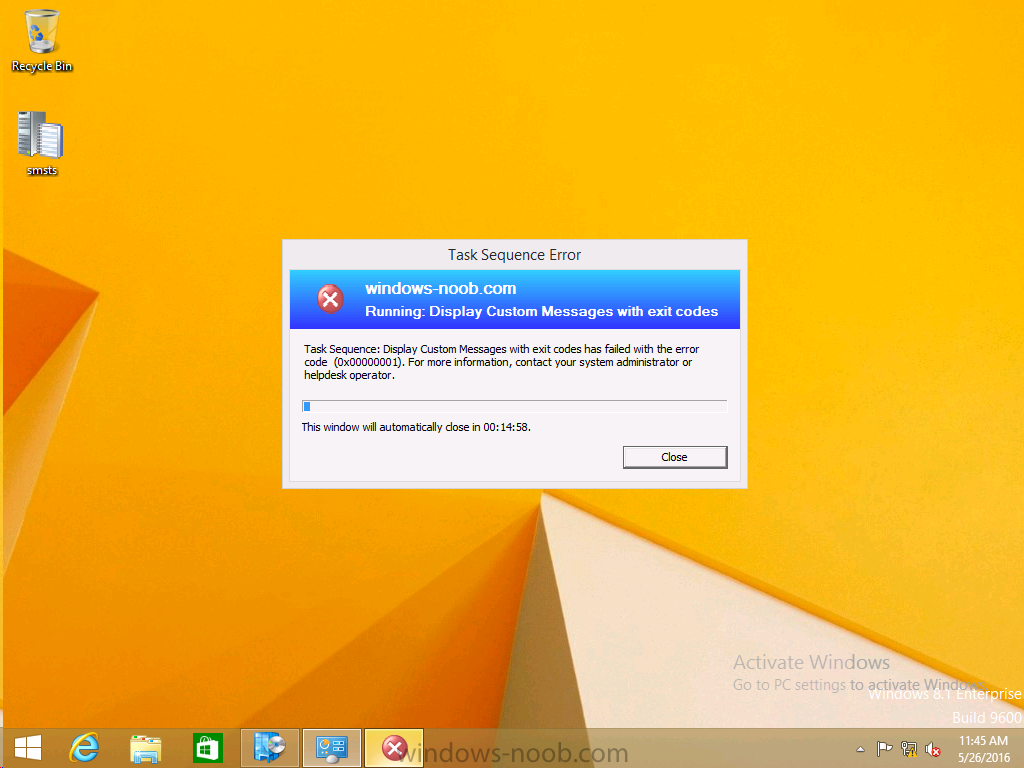
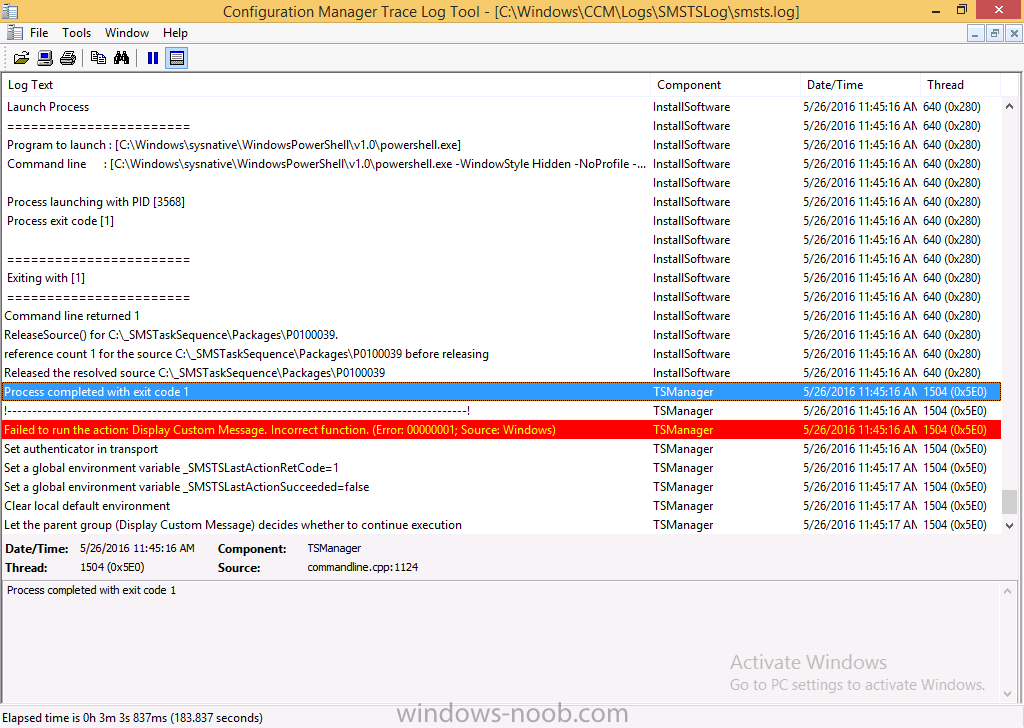

I get an unknown error in the SMSTSlog. When I run the ServiceUI command manually I get the following error “Process Not Found: [TsProgressUI.exe]”
I don’t think the above msg pop up will work with SCCM In-Place Upgrade task sequence. is there anything which can run in during In-Place Upgrade?
I been banging my head against the table for the past 3 days and finally figured out why following this did not work. I am using MDT 8456 default boot image from SCCM 2012 build 8913. The reason the pop-up did not work is the location of Powershell has shift from what’s written above “%windir%\sysnative\WindowsPowerShell\v1.0\powershell.exe” to new location “%windir%\system32\WindowsPowerShell\v1.0\powershell.exe”
you are right, thanks for updating the thread with your findings
Pingback: Все, что необходимо знать об SCCM — Links for IT folks